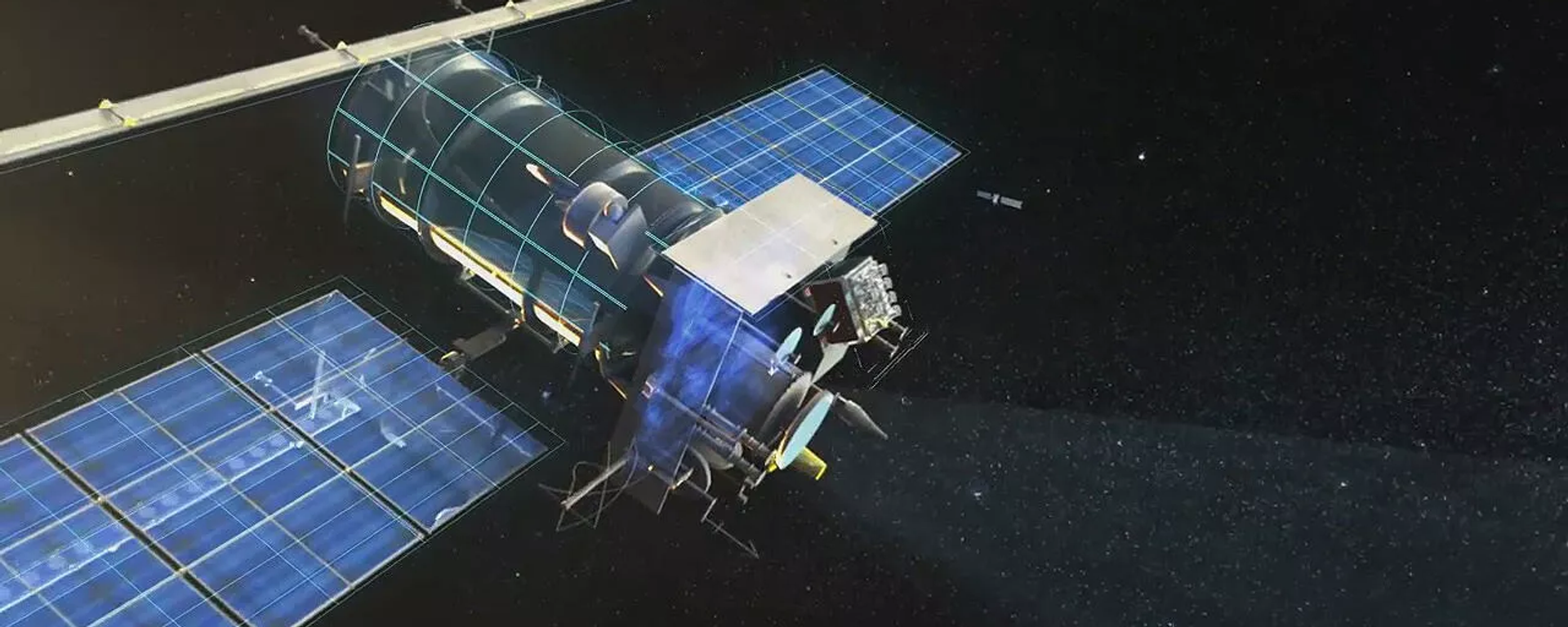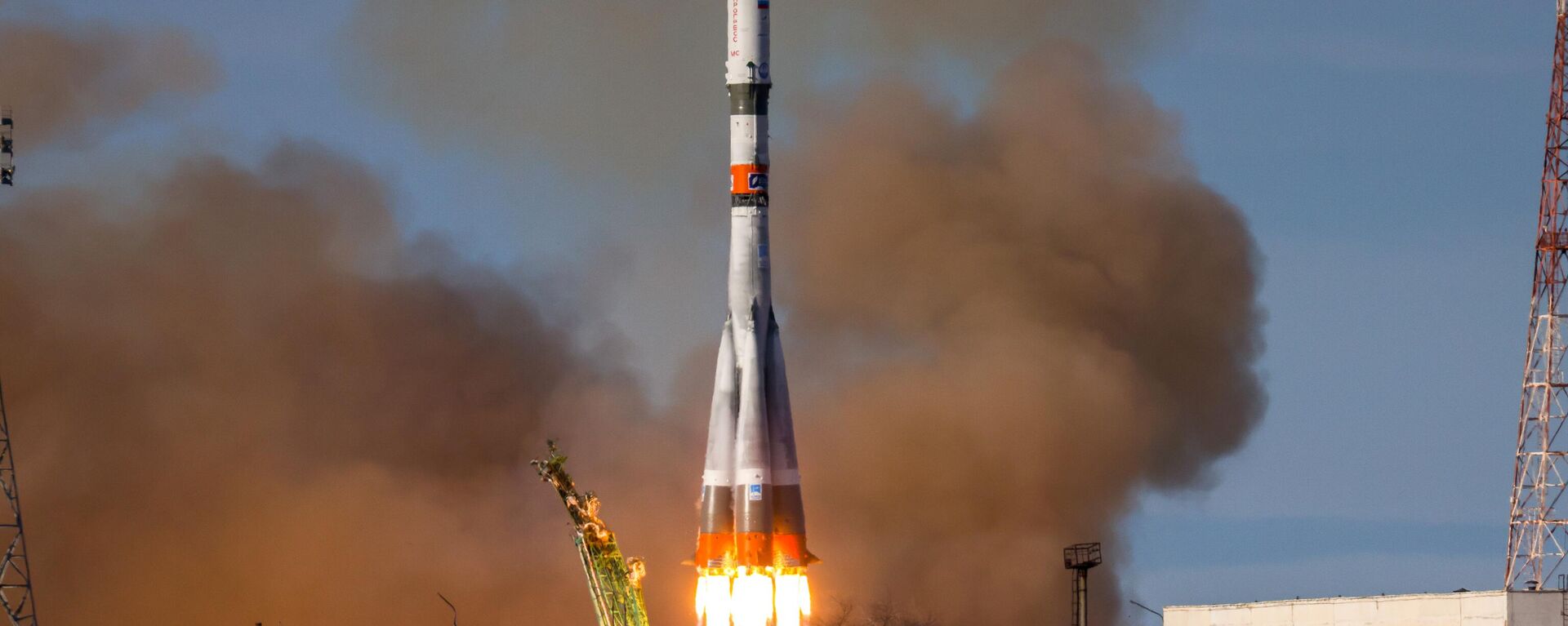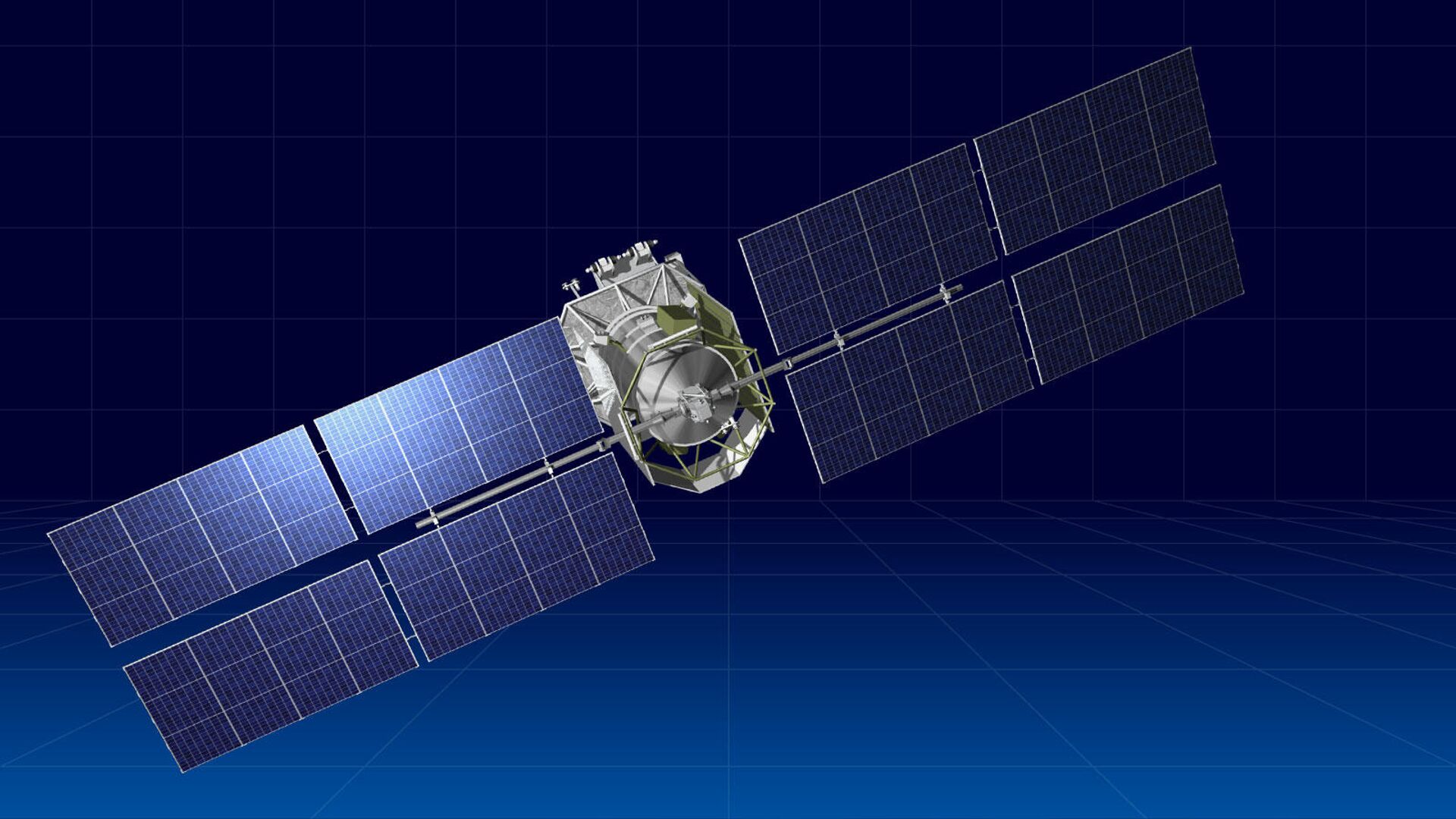https://sputnikglobe.com/20231207/russian-scientists-suggest-new-means-of-satellite-control--1115460048.html
Russian Scientists Suggest New Means of Satellite Control
Russian Scientists Suggest New Means of Satellite Control
Sputnik International
Scientists from the Samara National Research University (Samara University) have developed a method for assessing thermal shock risks for small spacecraft (SmallSats), carrying symmetrically arranged flexible elements (solar panels).
2023-12-07T18:33+0000
2023-12-07T18:33+0000
2023-12-07T18:33+0000
beyond politics
science & tech
samara
earth
russia
satellite
https://cdn1.img.sputnikglobe.com/img/07e6/03/16/1094095617_0:0:1600:900_1920x0_80_0_0_50253e2efb89e81827a3d65503423b6b.jpg
The researchers looked into key perturbations arising from the thermal impact. The results of the study can be applied in Earth remote sensing and gravity sensitive tasks, performed on SmallSats. The findings are published in the peer-reviewed scientific journal Symmetry.According to scientists at Samara University, SmallSats are actively used in regular remote sensing. The data they provide makes it is possible to track how the Earth changes in real-time.As the satellites orbit they often enter and leave the Earth's shadow, experiencing a thermal shock when they re-emerge into the unfiltered sunlight. The extremes of temperature range from +121°C (249.8°F) down to -157°C (-250.6°F). Those fluctuations severely affect SmallSats, even leading to loss of operational control over the device altogether.Denis Orlov noted that the number of flexible elements in small satellites was higher than that of other types of spacecraft.The researchers said that with current technology, Small Sats can be negatively affected by very low temperature. Imaging quality can be reduced and experiments such as growing crystals or culturing living organisms in zero gravity could be ruined.That makes studying thermal shocks and working out effective ways to neutralize their impact on SmallSats important to the science of space materials."Theoretical research in this area is mostly based on the fact that the device has a single attached flexible element. We do this to ensure that the calculations are not too complicated, but representative at the same time. However, more often than not, flexible elements are arranged symmetrically. Within the study, we paid particular attention to offset the thermal shock effect on symmetrical flexible elements. Specifically, we carried out simulations for two and four flexible elements," he added.Through the studies, Samara University scientists assessed the perturbing effect that thermal shock has on SmallSats. When flexible elements are laid out symmetrically, the effect appears as inertia from the accelerated movement of the flexible elements’ points. The remaining perturbations cancel each other out due to symmetry.He stressed that the initial stage of the study saw proposals on how to neutralize the thermal shock effect by at least 10 percent.In the future, the research team seeks to advance and upgrade the mathematical model and to compare the results with data from SmallSats operations. A separate research area will be dedicated to drawing up recommendations on spacecraft design, aimed at minimizing negative impact of emerging factors.The study was part of a state assignment from the Ministry of Education and Science of the Russian Federation, representing advanced engineering aerospace school, based at Samara University ("Advanced Engineering Schools" Federal Project).
https://sputnikglobe.com/20231103/russian-scientists-discover-effects-of-thermal-shock-on-satellites-motion-1114687619.html
https://sputnikglobe.com/20231201/russias-15th-launch-in-one-year-progress-ms-25-soars-to-iss-from-baikonur-1115322185.html
samara
earth
russia
Sputnik International
feedback@sputniknews.com
+74956456601
MIA „Rossiya Segodnya“
2023
Sputnik International
feedback@sputniknews.com
+74956456601
MIA „Rossiya Segodnya“
News
en_EN
Sputnik International
feedback@sputniknews.com
+74956456601
MIA „Rossiya Segodnya“
Sputnik International
feedback@sputniknews.com
+74956456601
MIA „Rossiya Segodnya“
what is satellite control, how do satellites work, what do satellites do, how do satellites get launched, what's a satellite, what are smallsats, what are solar panels, thermal shock, thermal shock in space
what is satellite control, how do satellites work, what do satellites do, how do satellites get launched, what's a satellite, what are smallsats, what are solar panels, thermal shock, thermal shock in space
Russian Scientists Suggest New Means of Satellite Control
Scientists from the Samara National Research University (Samara University) have developed a method for assessing thermal shock risks for small spacecraft (SmallSats), carrying symmetrically arranged flexible elements (solar panels).
The researchers looked into key perturbations arising from the thermal impact. The results of the study can be applied in Earth remote sensing and gravity sensitive tasks, performed on SmallSats. The
findings are published in the peer-reviewed scientific journal Symmetry.
According to scientists at Samara University, SmallSats are actively used in regular remote sensing. The data they provide makes it is possible to track how the Earth changes in real-time.
As the satellites orbit they often enter and leave the Earth's shadow, experiencing a
thermal shock when they re-emerge into the unfiltered sunlight. The extremes of temperature range from +121°C (249.8°F) down to -157°C (-250.6°F). Those fluctuations severely affect SmallSats, even leading to loss of operational control over the device altogether.
"When it comes to controlling the motion of SmallSats, there are a few peculiarities due to the substantial effect flexible elements (e.g. solar panels) have. Therefore, apart from familiar obstacles coming from solar panels due to their own fluctuation, other factors should also be considered. One such factor is thermal shock, which affects the way the device is handled and guided", said Denis Orlov, assistant researcher at the Samara University Space Engineering Department.
Denis Orlov noted that the number of flexible elements in
small satellites was higher than that of other types of spacecraft.
The researchers said that with
current technology, Small Sats can be negatively affected by very low temperature.
Imaging quality can be reduced and experiments such as growing crystals or culturing living organisms in zero gravity could be ruined.

3 November 2023, 10:23 GMT
That makes studying thermal shocks and working out effective ways to neutralize their impact on SmallSats important to the science of
space materials.
"Theoretical research in this area is mostly based on the fact that the device has a single attached flexible element. We do this to ensure that the calculations are not too complicated, but representative at the same time. However, more often than not, flexible elements are arranged symmetrically. Within the study, we paid particular attention to offset the thermal shock effect on symmetrical flexible elements. Specifically, we carried out simulations for two and four flexible elements," he added.
Through the studies, Samara University scientists assessed the perturbing effect that thermal shock has on
SmallSats. When flexible elements are laid out symmetrically, the effect appears as inertia from the accelerated movement of the flexible elements’ points. The remaining perturbations cancel each other out due to symmetry.
"At this point, the need for tangible application of the devices aimed at verifying the results limits the practical significance [of the study]. Refining the model further will boost the efficiency of the design and operation of SmallSats," Orlov noted.
He stressed that the initial stage of the study saw proposals on how to neutralize the thermal shock effect by at least 10 percent.
In the future, the research team seeks to advance and upgrade the mathematical model and to compare the results with data from SmallSats operations. A separate research area will be dedicated to drawing up recommendations on spacecraft design, aimed at minimizing negative impact of emerging factors.

1 December 2023, 13:12 GMT
The study was part of a state assignment from the Ministry of Education and Science of the Russian Federation, representing advanced engineering aerospace school, based at Samara University ("Advanced Engineering Schools" Federal Project).




